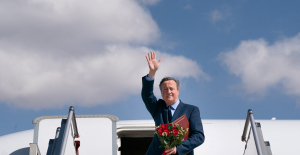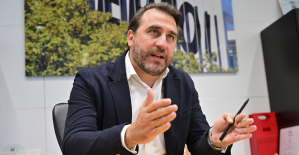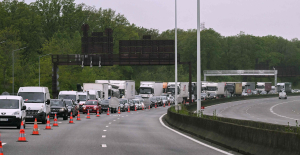While the deficit is slipping, the government is looking for savings in all directions and in particular wants to curb spending on sick leave. And for good reason: 42% of private sector employees were ordered to take sick leave last year, and 38% actually took it, according to the latest Malakoff Humanis barometer. Figures down compared to 2022, a year still marked by Covid, but which remain high.
Ordinary minor illnesses - colds, flu, gastro - are the leading cause of sick leave (33%), followed by "psychological" disorders and professional burnout (15%), then musculoskeletal disorders (12%). Serious illnesses, such as cancer, only represent 4% of sick leave.
Above all, with 40% of stoppages, small businesses long spared from absenteeism are increasingly impacted, with a continuous increase in absenteeism for three years. “This has never been seen before. Employees were less inclined to stop work in small companies because they knew that they could not be replaced and that this would weigh on their colleagues,” says Anne-Sophie Godon, director of services at Malakoff Humanis. Above all, the three days of waiting, rarely paid by the employer in small businesses, is the first factor that pushes these employees to come to work even when sick.
“But today we are seeing an erosion of commitment and the arrival of younger employees, more inclined to stop,” continues Anne-Sophie Godon. Those under 40 represent 46% of the workforce in small businesses, while they represent only 35% in businesses with more than 1,000 employees. An apparent paradox because young people are supposed to be in better health than older people. “The mental health of young people is perceived as less good. In addition, they have less financial means than older people to cope with life events. Two factors that encourage them to stop,” estimates Anne-Sophie Godon.
Conversely, large companies recorded the largest drop in absenteeism. “This is explained both by the adoption of teleworking, the deployment of social policies (help for family caregivers, social workers, etc.) and the intensification of employers’ efforts in terms of prevention,” explains Anne-Sophie Godon.
Thus, 78% of employees able to do so would be in favor of teleworking instead of taking sick leave. And more than 4 out of 10 employees who can telework have already favored this solution over consulting a doctor and stopping work. Finally, the control of sick leave, higher in large groups, also partly explains this discrepancy.

 Austria: incestuous torturer Josef Fritzl, nicknamed the “national monster”, could soon be released
Austria: incestuous torturer Josef Fritzl, nicknamed the “national monster”, could soon be released An airline continues to treat a centenarian as a one-year-old baby
An airline continues to treat a centenarian as a one-year-old baby Germany: the trial of nine “Citizens of the Reich” conspirators begins this Monday
Germany: the trial of nine “Citizens of the Reich” conspirators begins this Monday United Kingdom: David Cameron under fire after renting a jet estimated at 42 million pounds
United Kingdom: David Cameron under fire after renting a jet estimated at 42 million pounds Sánchez cancels his agenda and considers resigning: "I need to stop and reflect"
Sánchez cancels his agenda and considers resigning: "I need to stop and reflect" The Federal Committee of the PSOE interrupts the event to take to the streets with the militants
The Federal Committee of the PSOE interrupts the event to take to the streets with the militants Repsol: "We want to lead generative AI to guarantee its benefits and avoid risks"
Repsol: "We want to lead generative AI to guarantee its benefits and avoid risks" Osteoarthritis: an innovation to improve its management
Osteoarthritis: an innovation to improve its management Closure of the A13: would it really be possible to make the A14 free?
Closure of the A13: would it really be possible to make the A14 free? Surprise retirement of HSBC chief executive Noel Quinn
Surprise retirement of HSBC chief executive Noel Quinn Fight against disinformation: Brussels puts pressure on Facebook and Instagram as the European elections approach
Fight against disinformation: Brussels puts pressure on Facebook and Instagram as the European elections approach McDonald's results still suffer from boycott linked to the war in Gaza
McDonald's results still suffer from boycott linked to the war in Gaza The Musée du Grand Siècle in Saint-Cloud, this 100 million euro project in Hauts-de-Seine which would weaken the A13
The Musée du Grand Siècle in Saint-Cloud, this 100 million euro project in Hauts-de-Seine which would weaken the A13 Marjane Satrapi distinguished by the Princess of Asturias Foundation
Marjane Satrapi distinguished by the Princess of Asturias Foundation Royal Enfield Shotgun, 'custom' attitude from Monday to Sunday
Royal Enfield Shotgun, 'custom' attitude from Monday to Sunday End of the legal battle between Britney Spears and her father
End of the legal battle between Britney Spears and her father Omoda 7, another Chinese car that could be manufactured in Spain
Omoda 7, another Chinese car that could be manufactured in Spain BYD chooses CA Auto Bank as financial partner in Spain
BYD chooses CA Auto Bank as financial partner in Spain Tesla and Baidu sign key agreement to boost development of autonomous driving
Tesla and Baidu sign key agreement to boost development of autonomous driving Skoda Kodiaq 2024: a 'beast' plug-in hybrid SUV
Skoda Kodiaq 2024: a 'beast' plug-in hybrid SUV The home mortgage firm rises 3.8% in February and the average interest moderates to 3.33%
The home mortgage firm rises 3.8% in February and the average interest moderates to 3.33% This is how housing prices have changed in Spain in the last decade
This is how housing prices have changed in Spain in the last decade The home mortgage firm drops 10% in January and interest soars to 3.46%
The home mortgage firm drops 10% in January and interest soars to 3.46% The jewel of the Rocío de Nagüeles urbanization: a dream villa in Marbella
The jewel of the Rocío de Nagüeles urbanization: a dream villa in Marbella Europeans: a senior official on the National Rally list
Europeans: a senior official on the National Rally list Blockade of Sciences Po: the right denounces a “drift”, the government charges the rebels
Blockade of Sciences Po: the right denounces a “drift”, the government charges the rebels Even on a mission for NATO, the Charles-de-Gaulle remains under French control, Lecornu responds to Mélenchon
Even on a mission for NATO, the Charles-de-Gaulle remains under French control, Lecornu responds to Mélenchon “Deadly Europe”, “economic decline”, immigration… What to remember from Emmanuel Macron’s speech at the Sorbonne
“Deadly Europe”, “economic decline”, immigration… What to remember from Emmanuel Macron’s speech at the Sorbonne These French cities that will boycott the World Cup in Qatar
These French cities that will boycott the World Cup in Qatar Premier League: Manchester United ready to sell the vast majority of its workforce
Premier League: Manchester United ready to sell the vast majority of its workforce Paris 2024 Olympics: when will Thierry Henry reveal the list of Olympic Blues?
Paris 2024 Olympics: when will Thierry Henry reveal the list of Olympic Blues? Rugby: Qatar's astronomical offer to host the biggest clashes between North and South
Rugby: Qatar's astronomical offer to host the biggest clashes between North and South OM-Atalanta Bergamo: at what time and on which channel to watch the Europa League semi-final first leg?
OM-Atalanta Bergamo: at what time and on which channel to watch the Europa League semi-final first leg?

















